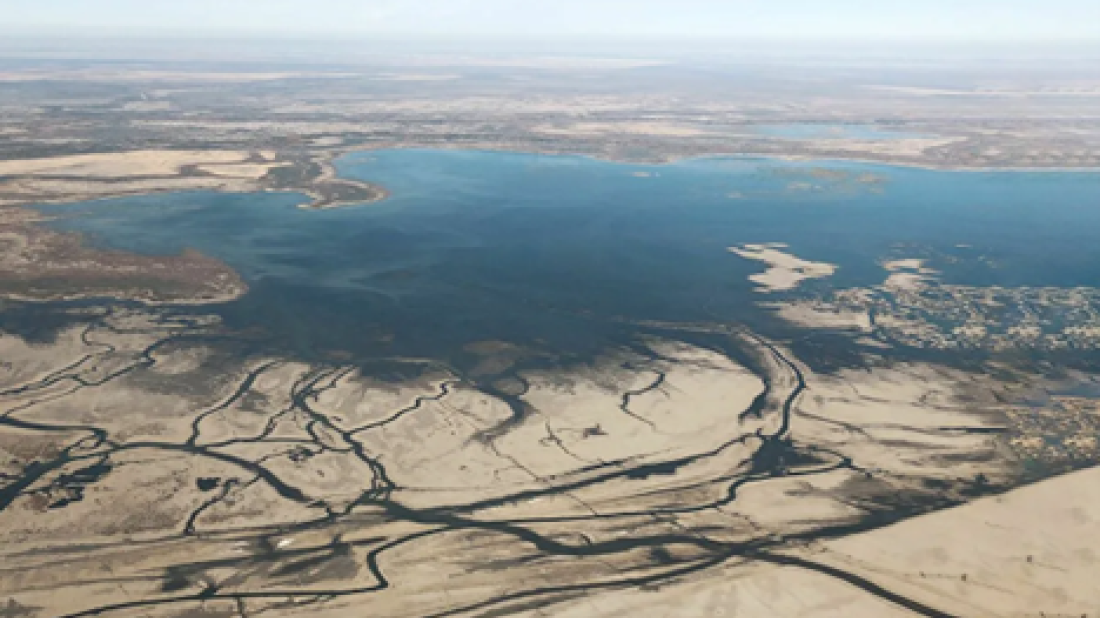Renee Nicole Good: Conflicting accounts threaten to overshadow fatal shooting of U.S. woman
Competing versions of what led to the fatal shooting of Renee Nicole Good by an Immigration Customs Enforcement agent are rife as President Trump and ...

The volume of water in the Northern Aral has reached 24.1 billion cubic metres, surpassing the 2025 target by a wide margin according to Kazakhstan’s Ministry of Water Resources and Irrigation, which announced that the sea is making a remarkable comeback, and doing so faster than anticipated.
Originally officials had aimed for 20.6 billion cubic metres by this year, with projections of reaching 24 billion only by 2029.
Since 2023, around 5 billion cubic metres of water has been diverted into the sea, primarily from the Syr Darya River, which remains the region’s main source of inflow.
According to Water Resources and Irrigation Minister Nurzhan Nurzhigitov, a feasibility study is currently under way to explore long-term stabilisation of the basin.
One of the proposals includes raising the Kokaral Dam by two metres, alongside the construction of a new hydraulic facility to manage water levels in the adjacent Akshatau and Kamystybas lake systems.
These plans are being discussed with local communities to ensure any interventions align with regional needs and environmental sustainability.
Officials say the project aims to increase both the volume and quality of water in the Northern Aral, support the restoration of the Syr Darya delta, reduce the spread of salt and toxic sediments from the exposed seabed, boost the local fishing economy in the Kyzylorda region, and improve living standards for nearby residents.
The Northern Aral also referred to as the Small Aral Sea began forming in 1987, as the original Aral Sea continued to recede due to excessive upstream irrigation during the Soviet era.
At its worst, the Aral lost more than 90% of its original volume, leaving behind a barren salt plain, dust storms carrying pollutants, and devastated local communities.
The turning point came in 2005, when Kazakhstan completed the Kokaral Dam, effectively separating the northern basin from the southern half, which had become almost entirely desiccated. The dam enabled the retention of seasonal inflows from the Syr Darya, triggering a gradual but tangible recovery.
In 2012, the Northern Aral and the Syr Darya delta were recognised as internationally significant wetlands under the Ramsar Convention, adding both visibility and urgency to conservation efforts. Since then, the area has become a key case study in landscape restoration and water governance.
While full rehabilitation of the Aral Sea as a whole remains unlikely say experts, the progress in the north offers rare proof that even large-scale environmental degradation can, at least in part, be reversed. With consistent scientific planning, community engagement, and government backing, Kazakhstan say it's turned what many viewed as a lost cause into a model of resilience and regeneration.
Open-source intelligence (OSINT) sources reported a significant movement of U.S. military aircraft towards the Middle East in recent hours. Dozens of U.S. Air Force aerial refuelling tankers and heavy transport aircraft were observed heading eastwards, presumably to staging points in the region.
Snow and ice stalled travellers in northwest Europe on Wednesday, forcing around a thousand to spend the night in Amsterdam's Schiphol airport but delighting others who set out to explore a snow-blanketed Paris on sledges and skis.
Diplomatic tensions between Tokyo and Beijing escalated as Japan slams China's export ban on dual-use goods. Markets have wobbled as fears grow over a potential rare earth embargo affecting global supply chains.
Two people have been killed after a private helicopter crashed at a recreation centre in Russia’s Perm region, Russian authorities and local media have said.
Iran’s chief justice has warned protesters there will be “no leniency for those who help the enemy against the Islamic Republic”, as rights groups reported a rising death toll during what observers describe as the country’s biggest wave of unrest in three years.
President Ilham Aliyev has said the opening of the Zangezur corridor is no longer in question, describing it as a strategic transport link that will connect mainland Azerbaijan with the Nakhchivan Autonomous Republic and carry cargo from China and Central Asia to wider regional markets.
Armenian Prime Minister Nikol Pashinyan met the outgoing U.S. ambassador Kristina Kvien at his office in capital Yerevan on Wednesday, according to a statement released by his office.
Armenian Prime Minister Nikol Pashinyan has confirmed that fuel imports from Azerbaijan have resumed, saying the market is open to all businesses and that discussions on broader trade and border processes are continuing.
Armenia has confirmed the shipment of a second batch of petroleum products from Azerbaijan, underscoring expanding economic ties between the two countries following the recent peace process. Yerevan's Ministry of Economy’s spokesperson, Lilit Shaboyan, verified the information.
Azerbaijan said it's conducting due diligence ahead of a potential $250–270 million investment in Israeli desalination company IDE Technologies, according to reports. The state investment company, Azerbaijan Investment Holding (AIH), is reportedly exploring the purchase of a 30% stake in the firm.
You can download the AnewZ application from Play Store and the App Store.

What is your opinion on this topic?
Leave the first comment